Zhongren Dong
Re-Parameterization of Lightweight Transformer for On-Device Speech Emotion Recognition
Nov 14, 2024
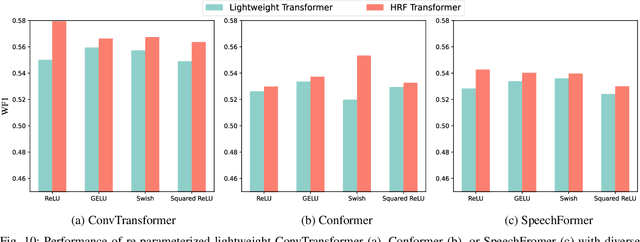
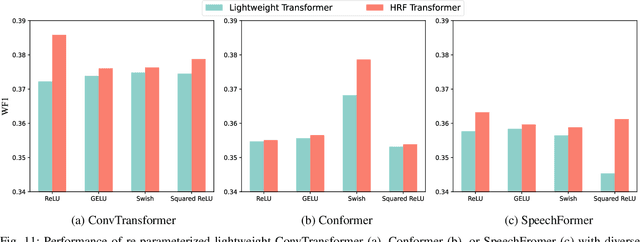
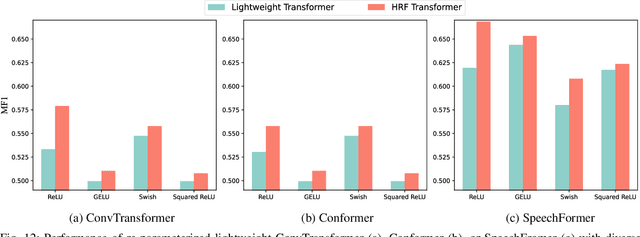
Abstract:With the increasing implementation of machine learning models on edge or Internet-of-Things (IoT) devices, deploying advanced models on resource-constrained IoT devices remains challenging. Transformer models, a currently dominant neural architecture, have achieved great success in broad domains but their complexity hinders its deployment on IoT devices with limited computation capability and storage size. Although many model compression approaches have been explored, they often suffer from notorious performance degradation. To address this issue, we introduce a new method, namely Transformer Re-parameterization, to boost the performance of lightweight Transformer models. It consists of two processes: the High-Rank Factorization (HRF) process in the training stage and the deHigh-Rank Factorization (deHRF) process in the inference stage. In the former process, we insert an additional linear layer before the Feed-Forward Network (FFN) of the lightweight Transformer. It is supposed that the inserted HRF layers can enhance the model learning capability. In the later process, the auxiliary HRF layer will be merged together with the following FFN layer into one linear layer and thus recover the original structure of the lightweight model. To examine the effectiveness of the proposed method, we evaluate it on three widely used Transformer variants, i.e., ConvTransformer, Conformer, and SpeechFormer networks, in the application of speech emotion recognition on the IEMOCAP, M3ED and DAIC-WOZ datasets. Experimental results show that our proposed method consistently improves the performance of lightweight Transformers, even making them comparable to large models. The proposed re-parameterization approach enables advanced Transformer models to be deployed on resource-constrained IoT devices.
ParaLBench: A Large-Scale Benchmark for Computational Paralinguistics over Acoustic Foundation Models
Nov 14, 2024
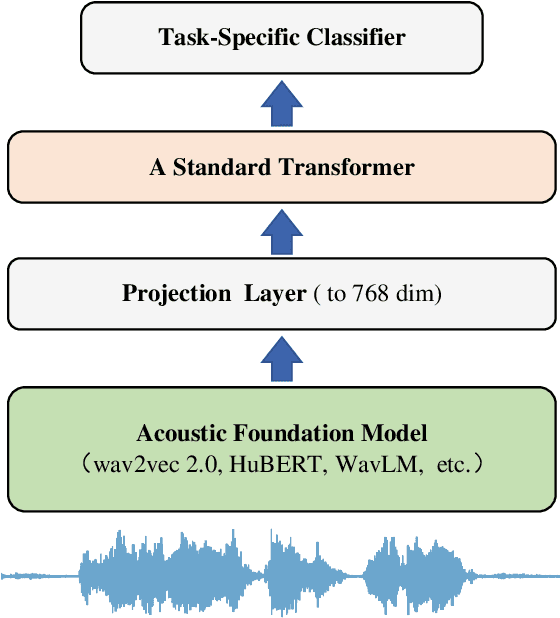
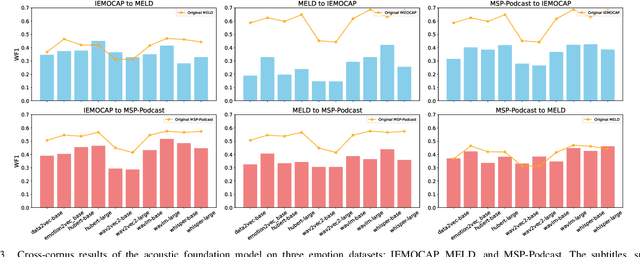
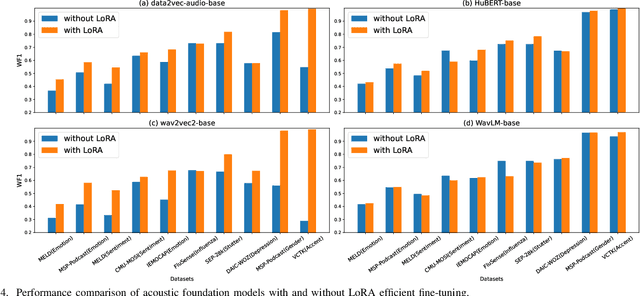
Abstract:Computational paralinguistics (ComParal) aims to develop algorithms and models to automatically detect, analyze, and interpret non-verbal information from speech communication, e. g., emotion, health state, age, and gender. Despite its rapid progress, it heavily depends on sophisticatedly designed models given specific paralinguistic tasks. Thus, the heterogeneity and diversity of ComParal models largely prevent the realistic implementation of ComParal models. Recently, with the advent of acoustic foundation models because of self-supervised learning, developing more generic models that can efficiently perceive a plethora of paralinguistic information has become an active topic in speech processing. However, it lacks a unified evaluation framework for a fair and consistent performance comparison. To bridge this gap, we conduct a large-scale benchmark, namely ParaLBench, which concentrates on standardizing the evaluation process of diverse paralinguistic tasks, including critical aspects of affective computing such as emotion recognition and emotion dimensions prediction, over different acoustic foundation models. This benchmark contains ten datasets with thirteen distinct paralinguistic tasks, covering short-, medium- and long-term characteristics. Each task is carried out on 14 acoustic foundation models under a unified evaluation framework, which allows for an unbiased methodological comparison and offers a grounded reference for the ComParal community. Based on the insights gained from ParaLBench, we also point out potential research directions, i.e., the cross-corpus generalizability, to propel ComParal research in the future. The code associated with this study will be available to foster the transparency and replicability of this work for succeeding researchers.
HAFFormer: A Hierarchical Attention-Free Framework for Alzheimer's Disease Detection From Spontaneous Speech
May 07, 2024


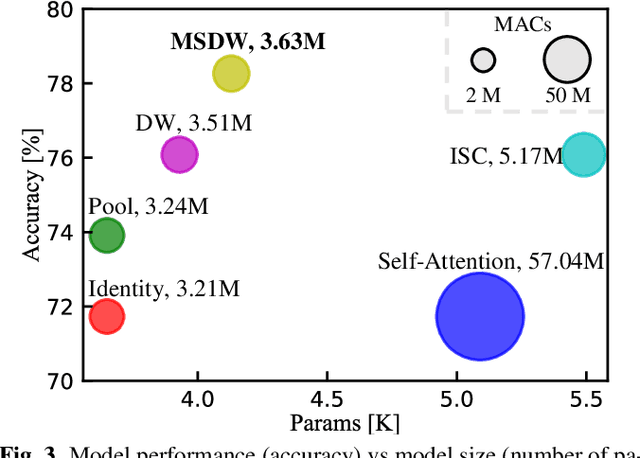
Abstract:Automatically detecting Alzheimer's Disease (AD) from spontaneous speech plays an important role in its early diagnosis. Recent approaches highly rely on the Transformer architectures due to its efficiency in modelling long-range context dependencies. However, the quadratic increase in computational complexity associated with self-attention and the length of audio poses a challenge when deploying such models on edge devices. In this context, we construct a novel framework, namely Hierarchical Attention-Free Transformer (HAFFormer), to better deal with long speech for AD detection. Specifically, we employ an attention-free module of Multi-Scale Depthwise Convolution to replace the self-attention and thus avoid the expensive computation, and a GELU-based Gated Linear Unit to replace the feedforward layer, aiming to automatically filter out the redundant information. Moreover, we design a hierarchical structure to force it to learn a variety of information grains, from the frame level to the dialogue level. By conducting extensive experiments on the ADReSS-M dataset, the introduced HAFFormer can achieve competitive results (82.6% accuracy) with other recent work, but with significant computational complexity and model size reduction compared to the standard Transformer. This shows the efficiency of HAFFormer in dealing with long audio for AD detection.
 Add to Chrome
Add to Chrome Add to Firefox
Add to Firefox Add to Edge
Add to Edge